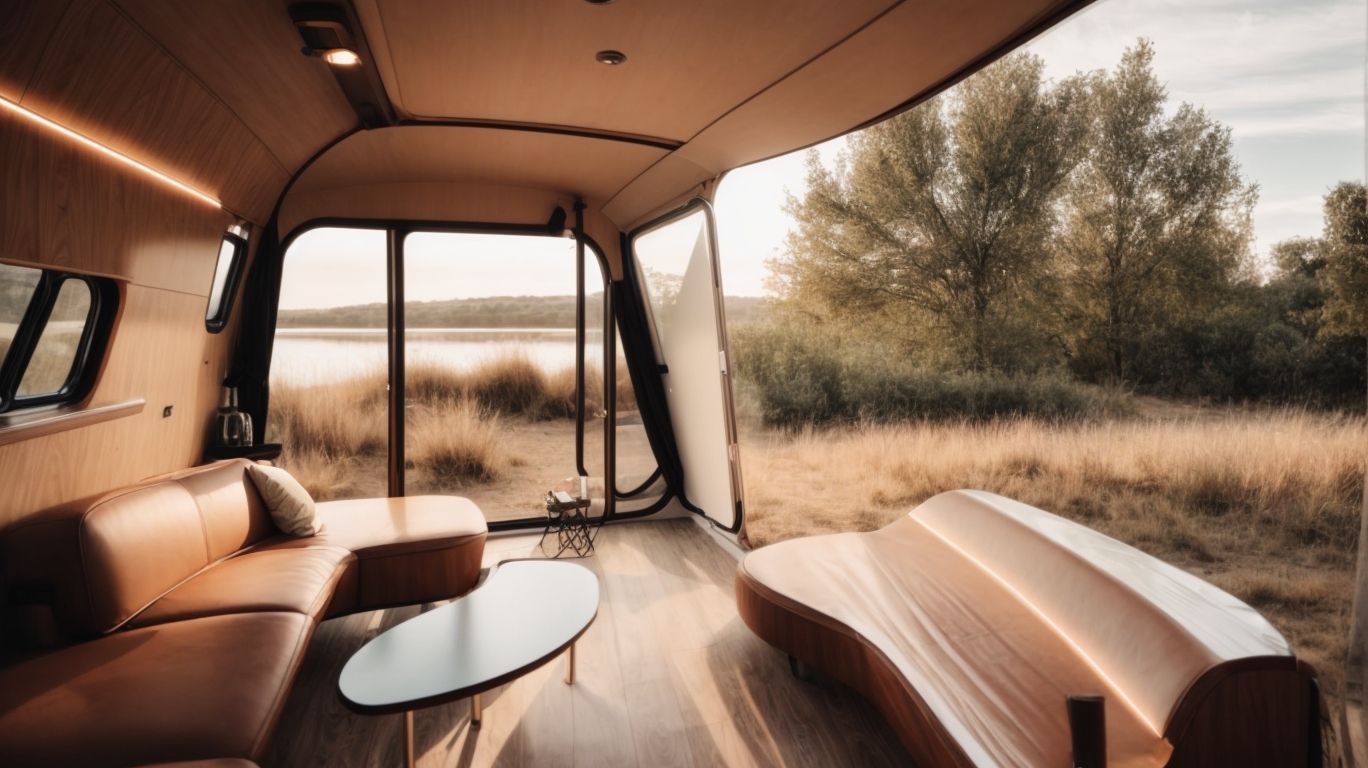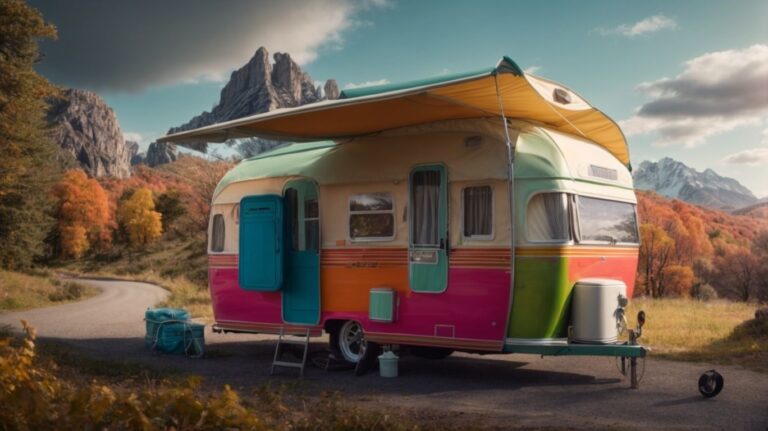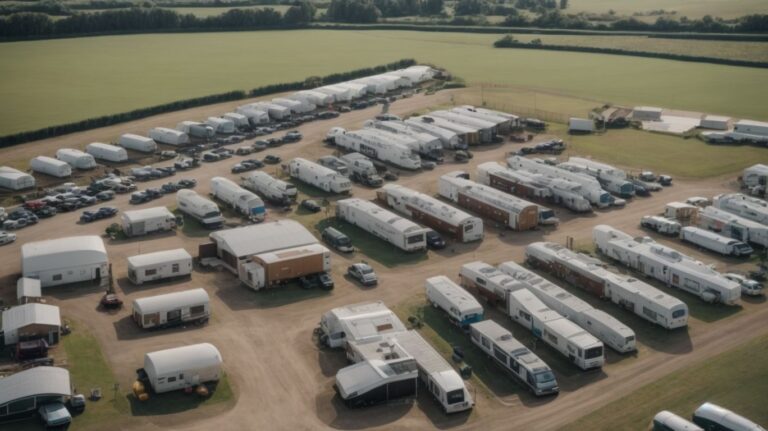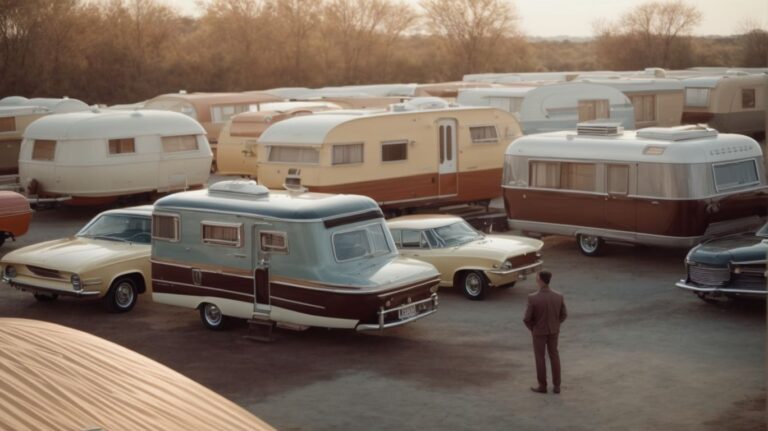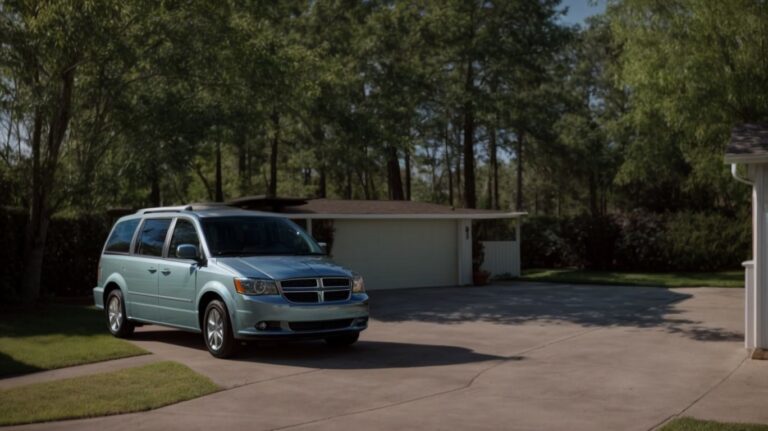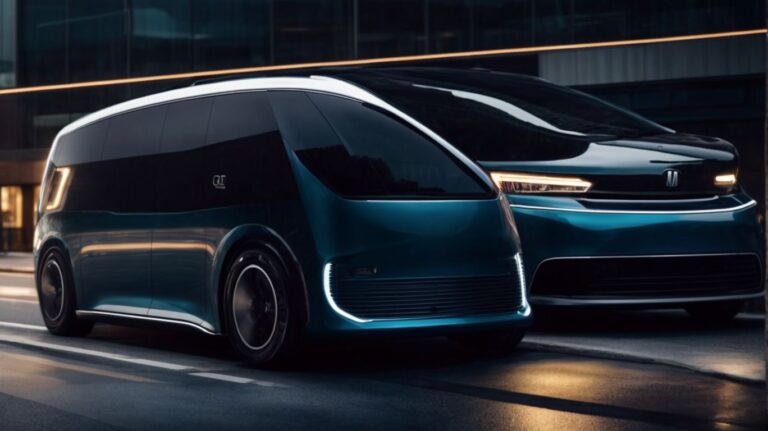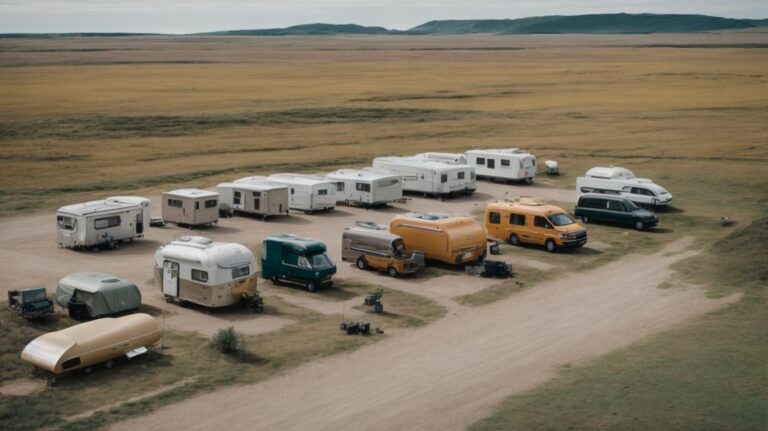Wood-Free Caravans: Are They Worth It?
Have you ever heard of wood-free caravans and wondered what they are all about? In this article, we will explore the world of wood-free caravans, including how they are made, the benefits they offer, and the drawbacks you should consider.
From being lightweight and easy to tow to being resistant to moisture and rot, there are many reasons why wood-free caravans are gaining popularity. Are they worth the investment? Let’s find out.
We will also discuss alternative caravan options for those who are still undecided.
Key Takeaways:
What Are Wood-Free Caravans?
Wood-Free Caravans are innovative recreational vehicles that utilize composite materials like fibreglass and aluminium in construction instead of traditional wood components.
By shifting away from the conventional timber frame structures, manufacturers can deliver campers that are lighter, more durable, and resistant to rot and moisture damage. This modern approach not only enhances longevity but also reduces maintenance costs for owners. Wood-Free Caravans are known for their superior insulation properties, allowing for better temperature control and energy efficiency.
One of the key benefits of composite materials is their resistance to delamination, a common issue in wood construction where layers can separate over time, causing structural weaknesses. By eliminating wood from the equation, this risk is significantly minimized, ensuring the structural integrity of the vehicle for longer periods.
How Are Wood-Free Caravans Made?
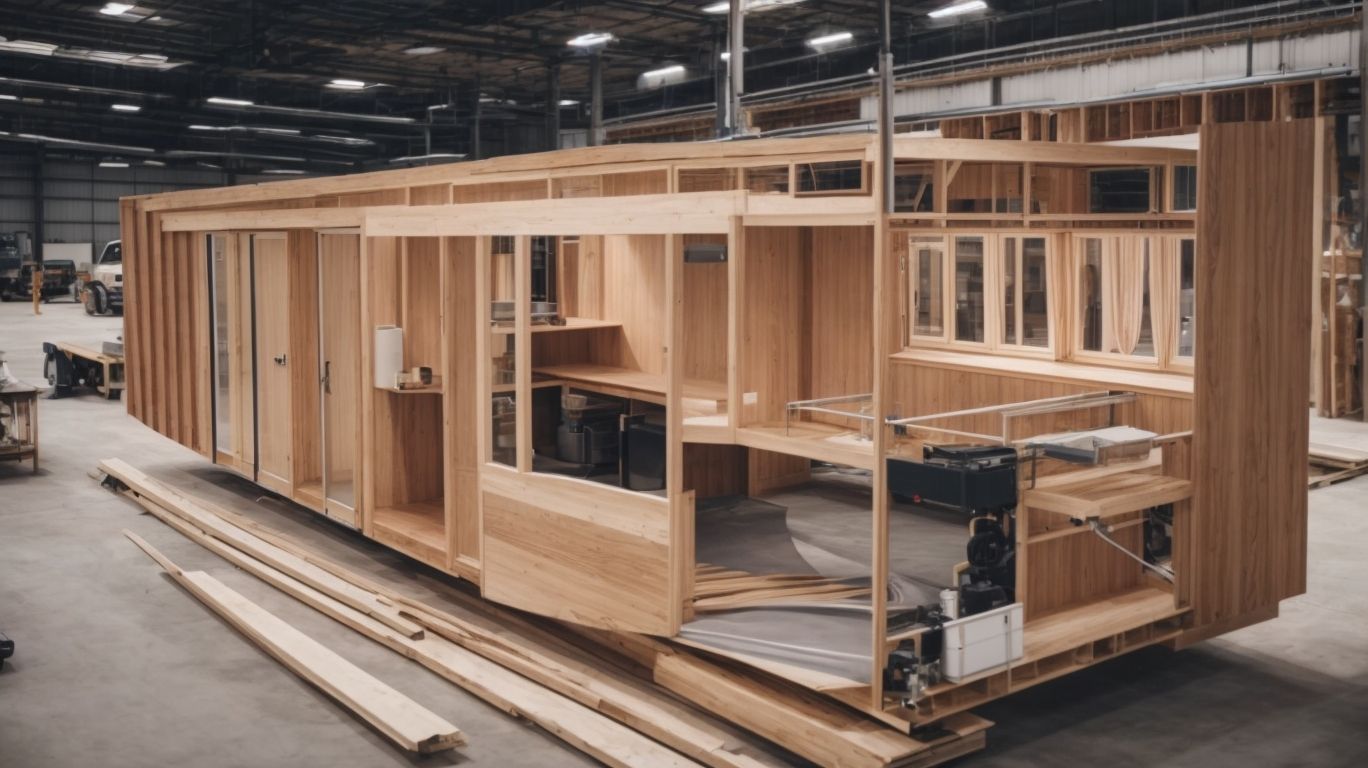
Motion Activated RV Step Lights, 10 LED Battery Operated Motorhome Motion Sensor led Light Strip, Magnetic Night Light Bar for Motorhome Travel,Travel Trailers, Camper (2 Pack)
- 【Infrared Induction Motion Detection】Motion sensor light on the PIR sensor can detect human movement, 10 feet once your approach is detected, the rv step lights will automatically turn on in the dark, in the absence of detected motion or other light sources, 18 seconds after the automatic shutdown, a large degree of power savings and improved durability.
Camco TST MAX RV Toilet Treatment Drop-INs - Control Unwanted Odors & Break Down Waste and Tissue - Safe Septic Tank Treatment - Orange Scent, 30-Pack (41183)
- Toilet Deodorizer With Reactive Odor-Eliminating Technology: Experience a powerful RV odor eliminator that stops RV black tank odors for up to 7 days. Just (1) toilet drop in treats camper toilets with up to a 40-gallon tank.
THANSTAR Collapsible Dish Drying Rack Portable Dinnerware Drainer Organizer for Kitchen RV Campers Travel Trailer Space Saving Kitchen Storage Tray
- 【Food Grade Material】Made from eco-friendly PP+TPR material that is BPA Free and Food-Grade. The flexible material allows the dish strainers for kitchen counter to collapse flat for easy space-saving and storage, making the most of your kitchen countertop.
Camco RhinoFLEX 20-Ft RV Sewer Hose Kit - Features Clear Elbow Fitting w/Removable 4-in-1 Adapter - Connects to 3” Slip or 3”/3.5”/4” NPT Threaded Sewer Connection (39742)
- Superior RV Tank Dumping: Streamline RV holding tank dumping with Camco’s RhinoFLEX 20' Camper Sewer Hose Kit. Built tough & flexible, this all-inclusive RV septic hose system provides simple & effective tank dumping on your camping adventures.
Camco Tastepure RV Water Filter - New & Advanced RV Inline Water Filter with Flexible Hose Protector - GAC & KDF Water Filter - Made in USA - Camping Essentials for Fresh Drinking Water (40043)
- Advanced 6-Step Filtration Technology: Experience the extraordinary power of Hex-Flow Technology & its remarkable 6-step filtration process. Every layer works together to provide you with water that is exceptionally clean.





Credits: Motorcaravanning.Com – Henry Perez
Wood-Free Caravans are manufactured using a combination of composite materials such as plywood, aluminium skin, and advanced adhesives to create a durable and lightweight structure.
One key material in the production of Wood-Free Caravans is Azdel, a composite panel made from a blend of polypropylene and fiberglass. This material is not only lightweight but also impervious to water damage, making it ideal for caravan construction. To assemble the various components, manufacturers utilize advanced bonding techniques that involve high-strength adhesives, ensuring a secure and long-lasting connection between the Azdel panels, aluminium skin, and other structural elements. These methods eliminate the need for traditional materials like particle board, reducing the overall weight of the caravan while enhancing its durability and weather resistance.
What Are the Benefits of Wood-Free Caravans?
Wood-Free Caravans offer numerous advantages, including being lightweight, resistant to moisture and rot, and environmentally friendly due to the use of materials like Azdel.
One of the key benefits of wood-free caravans is their lightweight construction. This feature makes them easier to tow, resulting in better fuel efficiency and reduced strain on the towing vehicle. Their superior resistance to moisture and rot is a game-changer, ensuring longevity and durability in various weather conditions. The utilization of Azdel composite materials not only enhances the structural integrity but also contributes to the eco-friendly aspect of these caravans by reducing the reliance on traditional wood-based materials.
Lightweight and Easy to Tow
One of the key advantages of Wood-Free Caravans is their lightweight design, making them easy to tow even with standard vehicles.
This lightweight feature is achieved through the use of advanced materials like foam insulation, which provides excellent thermal efficiency without adding excessive weight. This not only enhances the overall energy efficiency of the caravan but also contributes to a more comfortable living environment inside.
The innovative Alko chassis further complements this design by offering stability and control during towing, ensuring a smooth and safe journey. Its lightweight construction doesn’t compromise on strength and durability, providing a reliable foundation for the caravan.
Resistant to Moisture and Rot
Wood-Free Caravans exhibit exceptional resistance to moisture and rot, safeguarding the interior from water ingress and structural damage.
One of the key materials contributing to this protective feature is Glass Reinforced Plastic (GRP). GRP is renowned for its impermeability to water, making it an ideal choice for exteriors of Wood-Free Caravans. By using GRP in the construction, manufacturers ensure that the caravan remains impervious to moisture, preventing any chances of rot from developing.





Low Maintenance
Wood-Free Caravans require minimal maintenance due to their durable construction, which includes features like a plastic framework and closed cell foam insulation.
Not only does the closed cell foam insulation in Wood-Free Caravans enhance their durability and energy efficiency, but it also plays a significant role in reducing maintenance needs. This type of insulation is highly resistant to moisture, mold, and deterioration, ensuring that the caravan’s structure remains intact over extended periods. The plastic framework used in these caravans is not only sturdy but also easy to clean and maintain. With these components working in tandem, owners can enjoy prolonged longevity and low maintenance costs for their Wood-Free Caravans.
Environmentally Friendly
Wood-Free Caravans are considered environmentally friendly alternatives, with reduced offgassing and the use of eco-conscious materials like polyethylene and polyvinyl chloride.
Offgassing refers to the release of volatile organic compounds (VOCs) from materials, which can contribute to indoor air pollution. By eliminating wood components, Wood-Free Caravans significantly reduce offgassing, creating a healthier indoor environment for occupants. The choice of materials like polyethylene and polyvinyl chloride in construction helps in maintaining sustainability. These materials are durable, recyclable, and contribute to the eco-friendliness of the caravan. The composite construction of Wood-Free Caravans not only offers durability and longevity but also supports a greener and healthier planet.
What Are the Drawbacks of Wood-Free Caravans?
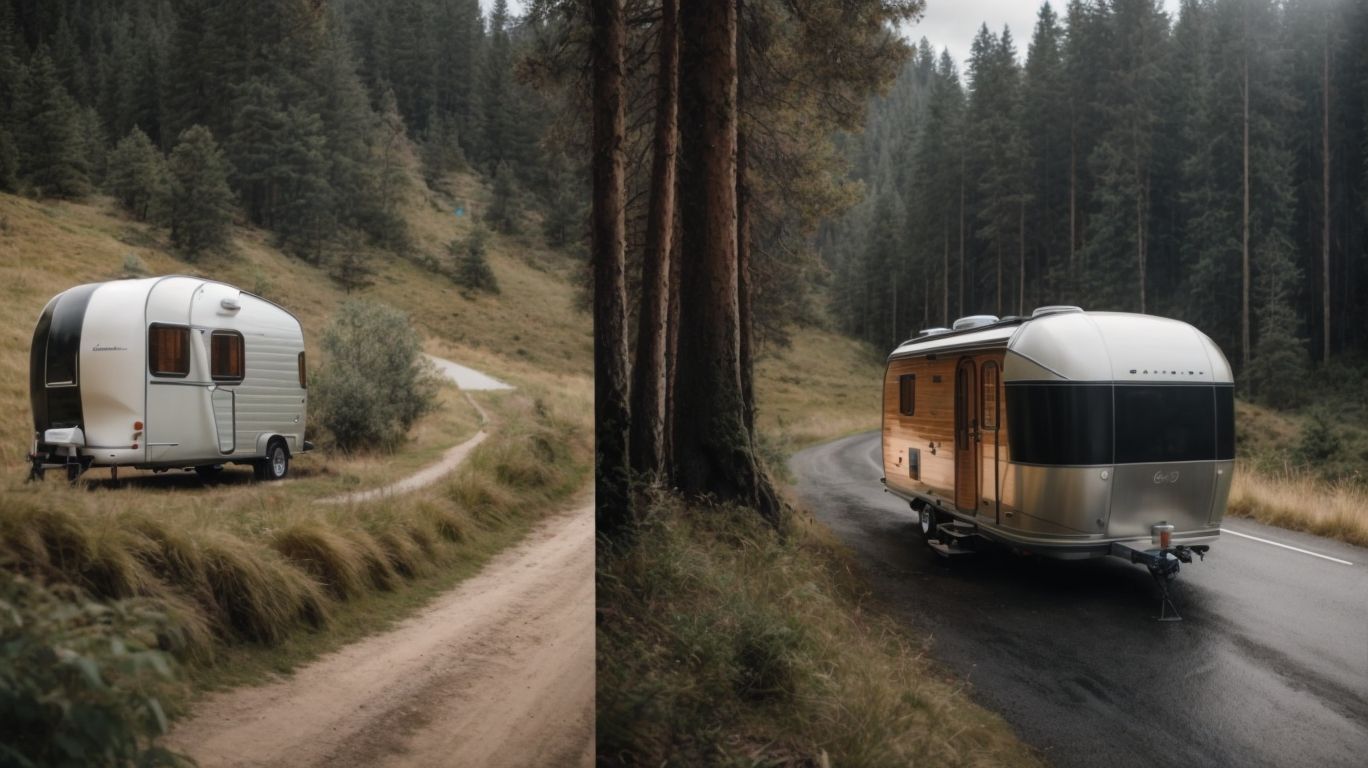
Credits: Motorcaravanning.Com – Donald Nelson
While Wood-Free Caravans offer various advantages, they also come with drawbacks such as higher initial costs and fewer customization options compared to traditional wood models like Lance trailers.
One significant drawback of opting for a wood-free caravan is the higher initial costs associated with advanced composite construction materials. The use of advanced composites can significantly drive up the overall price of the caravan, making it a less budget-friendly option for many buyers. These advanced materials often require specialized manufacturing processes which further contribute to the increased costs. While the initial investment may be higher, it is essential to weigh the long-term benefits against the upfront expenses.
Higher Cost
One notable drawback of Wood-Free Caravans is their higher initial cost, which can also extend to repair expenses due to the specialized materials like fibreglass and aluminium used in construction.





Wood-Free Caravans may require more extensive repairs than traditional models, which can lead to higher repair costs. The premium associated with fibreglass and aluminium materials often translates to expensive replacement parts and labor charges. While these materials offer durability and lightweight advantages, they can significantly impact the overall maintenance expenses in the long run. Owners must consider the trade-off between the initial investment and potential long-term financial implications, making informed decisions based on both upfront costs and ongoing repair expenditures.
Limited Customization Options
Wood-Free Caravans may offer fewer customization options, particularly in cabinetry and interior finishes, due to the constraints posed by composite construction and materials like particle board.
In terms of cabinetry in Wood-Free Caravans, the pre-fabricated nature of composite materials like particle board limits the extent to which modifications can be made. Unlike traditional wooden caravans that allow for intricate custom designs and materials, the composite structures used in wood-free models present challenges in altering the layout or adding unique features.
This leads to a reliance on standard features rather than bespoke modifications. While this can offer convenience and cost-efficiency, it does restrict the level of personalization and creative input that some caravan enthusiasts may desire.
Not as Insulated as Wood Caravans
Wood-Free Caravans may not provide the same level of insulation as traditional wood models, as materials like polystyrene and polyurethane may have different thermal properties.
While traditional wood caravans offer the natural insulation properties of wood, wood-free alternatives rely on synthetic materials like polystyrene and polyurethane, which are specifically designed to provide efficient thermal insulation. Polystyrene, known for its excellent insulating capabilities, traps air pockets within its structure to minimize heat transfer. On the other hand, polyurethane offers a high level of insulation due to its low thermal conductivity, making it a popular choice for wood-free caravan construction.
Are Wood-Free Caravans Worth the Investment?
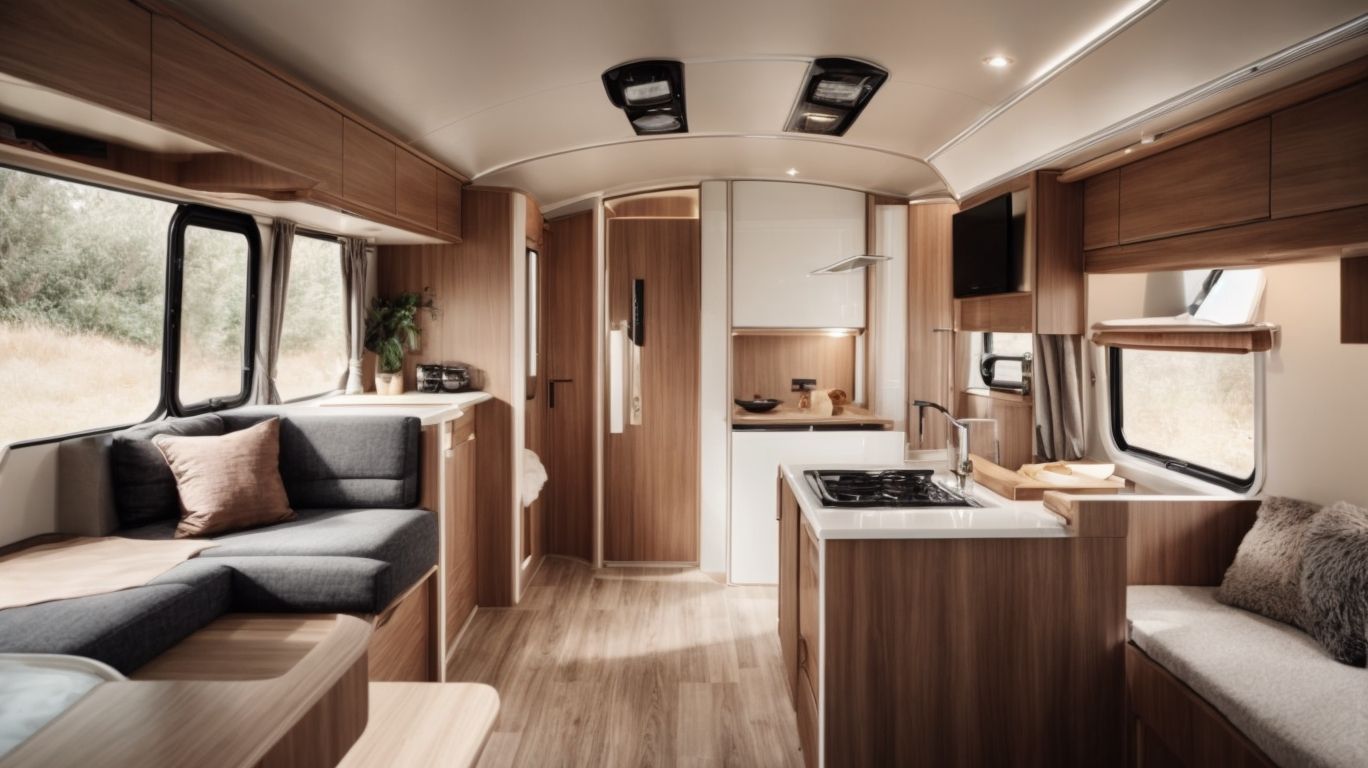
Credits: Motorcaravanning.Com – Nathan Rivera
Determining if Wood-Free Caravans are worth the investment involves evaluating factors like construction quality, long-term durability, and the potential savings in repair costs due to issues like water ingress common in traditional models with aluminium components.





Wood-Free Caravans offer a compelling ROI due to their advanced construction methods, utilizing materials resistant to rot and water damage. This not only ensures longevity but also drastically reduces the risk of costly repairs associated with water ingress over time.
These caravans typically have a lightweight yet sturdy design, thanks to the absence of wood, making them more fuel-efficient during transport, thus adding to the cost-efficiency factor. In the long run, choosing a Wood-Free Caravan could translate to substantial savings and a hassle-free camping experience.
What Are the Alternatives to Wood-Free Caravans?
Apart from Wood-Free Caravans, alternative options in the RV industry include traditional wood models, fibreglass caravans, aluminium constructions, and other composite variations.
Traditional wood caravans often provide a cozy and classic feel, appealing to enthusiasts who appreciate the timeless charm of wood construction.
Fibreglass caravans, on the other hand, are favored for their lightweight nature and durability, making them a suitable choice for frequent travelers seeking efficiency.
Aluminium constructions offer sturdy and corrosion-resistant properties, ideal for those who prioritize longevity and low maintenance.
Diverse composite approaches blend various materials to enhance strength, insulation, and overall performance, catering to a wide range of preferences in the RV market.
Traditional Wood Caravans
Traditional Wood Caravans rely on classic materials like timber and plywood for construction, with considerations for issues like water ingress and rot prevalent in such models.
Timber and plywood are fundamental components of traditional wood caravans, providing a warm and inviting aesthetic to these iconic vehicles. Their susceptibility to water ingress can lead to rot if not properly maintained, posing significant challenges for long-term durability. Unlike modern composite alternatives that offer enhanced moisture resistance and durability, traditional wood caravans often require more upkeep and protection against the elements.
Fiberglass Caravans
Fiberglass Caravans are known for their lightweight construction, enhanced by materials like fibreglass and foam insulation, offering a balance of durability and maneuverability on the road.





Fibreglass, being a sturdy yet lightweight material, plays a crucial role in ensuring that the caravan can be easily towed without compromising on structural integrity. The incorporation of foam insulation not only keeps the interior temperature regulated but also adds an extra layer of comfort for the travelers.
The weight reduction achieved through these materials not only improves fuel efficiency but also allows for easier handling and maneuvering, especially on winding roads and challenging terrains. The Alko chassis further enhances the structural stability of the caravan, providing a solid foundation for a smooth and safe journey.
Aluminum Caravans
Aluminum Caravans leverage the properties of aluminium to deliver lightweight yet robust structures that offer superior water resistance, making them popular choices in the RV industry like the renowned Lance trailers.
Aluminium, known for its high strength-to-weight ratio, allows manufacturers to create caravans that are sturdy without being overly heavy, enabling easier towing and better fuel efficiency. The intrinsic corrosion resistance of aluminium further adds to the durability of these caravans, ensuring they stand the test of time against the elements. When compared to construction methods like composite and fibreglass, aluminium stands out for its ability to maintain structural integrity even in challenging environments, making it an ideal choice for outdoor enthusiasts who seek reliability and longevity in their mobile accommodations.
Composite Caravans
Composite Caravans employ innovative construction techniques like sandwich panels and foam insulation to achieve remarkable durability and structural integrity, as exemplified by designs used in projects like FEMA trailers.
These sandwich panels consist of two layers of material ‘sandwiching’ a core material, providing exceptional strength and insulation properties.
The foam insulation further enhances the thermal efficiency of the caravan, ensuring comfort in various climates while reducing energy consumption.
With a focus on durability, composite caravans are designed to withstand rough terrains and challenging weather conditions, making them ideal for adventurous travelers and long-term use.
Similar concepts employed in specialized projects like FEMA trailers illustrate the versatility and reliability of this construction approach, proving its effectiveness in demanding environments.





Frequently Asked Questions
1. What are wood-free caravans and why are they worth considering?
Wood-free caravans are recreational vehicles that are constructed without the use of traditional wooden materials. They are worth considering because they offer a number of benefits such as being more lightweight, durable, and resistant to moisture and rot.
2. How are wood-free caravans able to be more durable than traditional wooden models?
Wood-free caravans are constructed using materials such as aluminum, fiberglass, and composites, which are known for their strength and durability. These materials are able to withstand harsh weather conditions and require less maintenance compared to wood, making them a more long-lasting option.
3. Are wood-free caravans more expensive than traditional wooden models?
While the initial cost of a wood-free caravan may be slightly higher, in the long run, they can actually save you money due to their durability and low maintenance needs. Additionally, their lightweight construction can also save you money on fuel costs.
4. Can wood-free caravans still offer a cozy and comfortable interior?
Absolutely! Wood-free caravans can have a cozy and comfortable interior just like traditional wooden models. Many manufacturers use high-quality materials and modern designs to create a warm and inviting living space inside the caravan.
5. Are there any downsides to choosing a wood-free caravan?
Some people may prefer the traditional look and feel of a wooden caravan, so a wood-free option may not be their first choice. Additionally, wood-free caravans may have less storage space due to their lightweight construction and some models may be more expensive upfront.
6. Is it worth investing in a wood-free caravan for occasional use?
Yes, even for occasional use, a wood-free caravan may be worth it. Its durability and low maintenance needs mean you can enjoy your caravan for many years without worrying about costly repairs or replacements. Plus, the lightweight construction makes it easier to tow and maneuver on the road.

